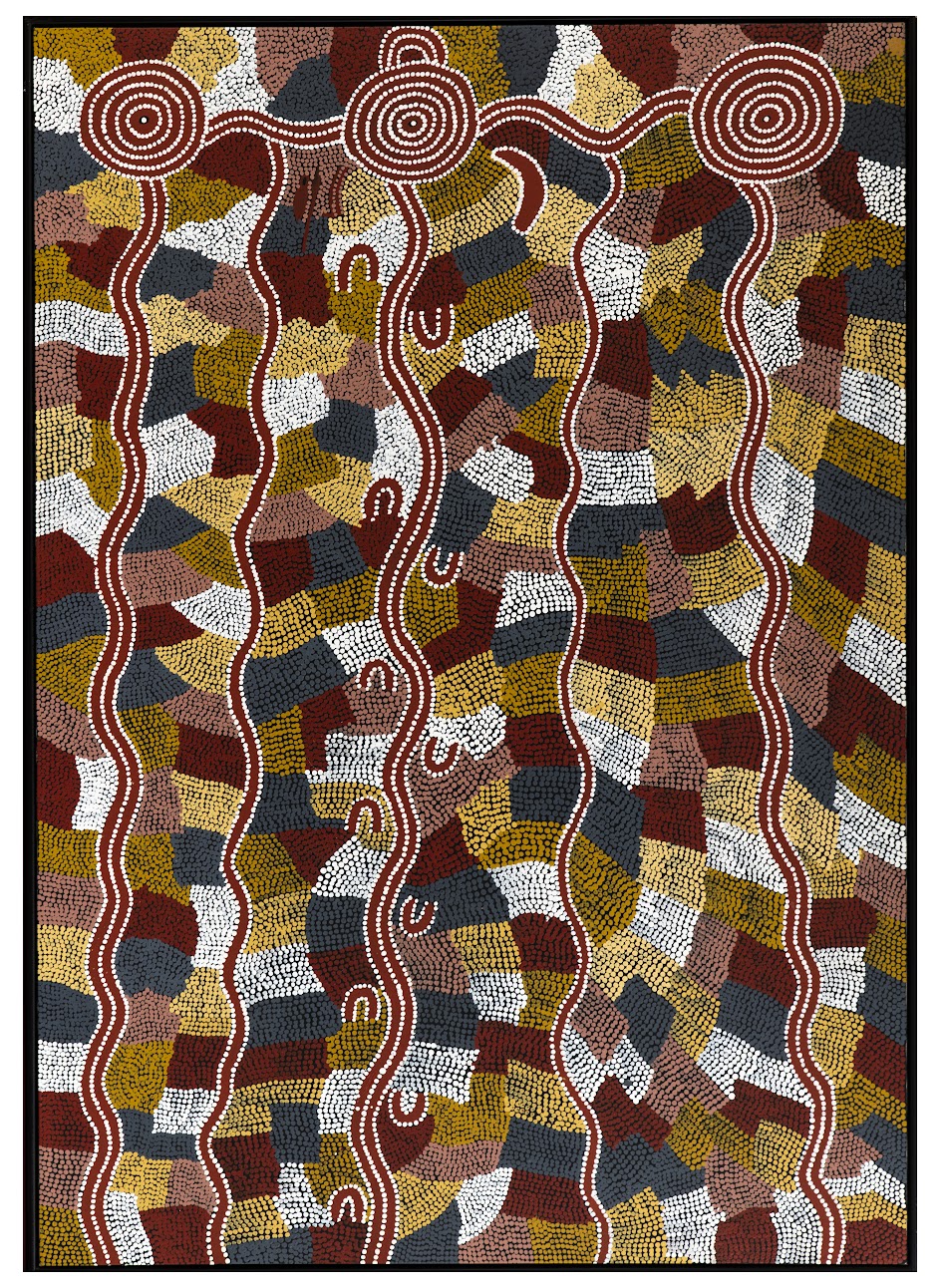Dinny Nolan Tjampitjinpa was born around 1944 near Yuendumu in the central Australian desert. He is part of the Warlpiri people. His journey, marked by many years as a cattleman in the Territory, has deepened his knowledge of the land and its rituals. It was in the 1970s, when he settled in Papunya, that his artistic journey truly took flight.
As the principal custodian of the rain ceremonies and water-related dreams, Dinny plays an essential role in traditional rituals. He is responsible for the corroborees, traditional Aboriginal ceremonies, where he paints the bodies of participants with an art that transcends the visual, becoming a living expression of Warlpiri culture.
His integration into the Papunya painting group largely comes through his family ties to renowned artists such as Clifford Possum, Billy Stockman, and Kaapa. In 1977, he joined the Papunya artists and began exhibiting his works in Melbourne, one of which has been immortalized in stained glass at the National Gallery of Victoria. His art, rich in symbols and narratives, evokes visions of water, wind, pelicans, wild turkeys, emus, goannas, and bushfires, weaving an unbreakable connection between the past and the present.
In 1981, during a trip to Sydney with his colleague Paddy Carroll Tjungurrayi, Dinny created his first sand painting ever presented outside of Central Australia. This experience propelled him onto the international stage, where he shares his culture at conferences and exhibitions in the United States as a guest of Native American tribes.
Today, Dinny Nolan’s works are housed in major collections around the world, including the National Gallery of Australia, the National Museum of Australia, and the Victorian Arts Centre. His influence also extends to contemporary artists like Trevor Nickolls, establishing a link between ancient traditions and new forms of artistic expression.
To this day, Dinny is one of the last living artists who participated in the early days of the Aboriginal painting movement. Through each brushstroke, he reminds future generations of the importance of connection to the land, water, and ancestors, ensuring that the stories of his people endure through time.

Sign up to the newsletter and stay informed about our latest acquisitions and exhibitions:
© Galerie Rousset 2023